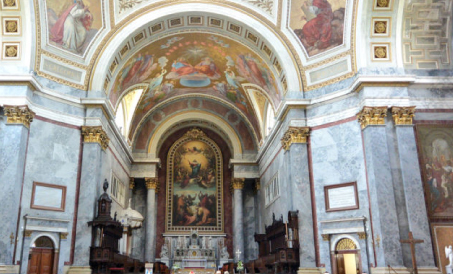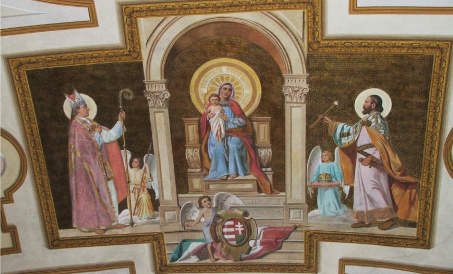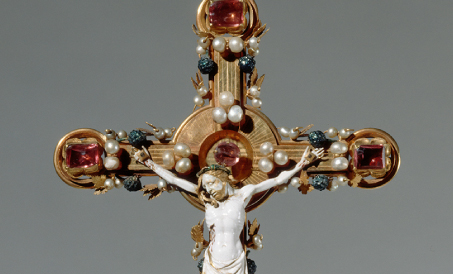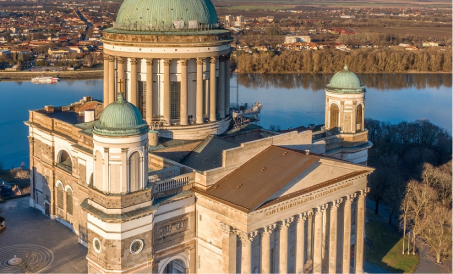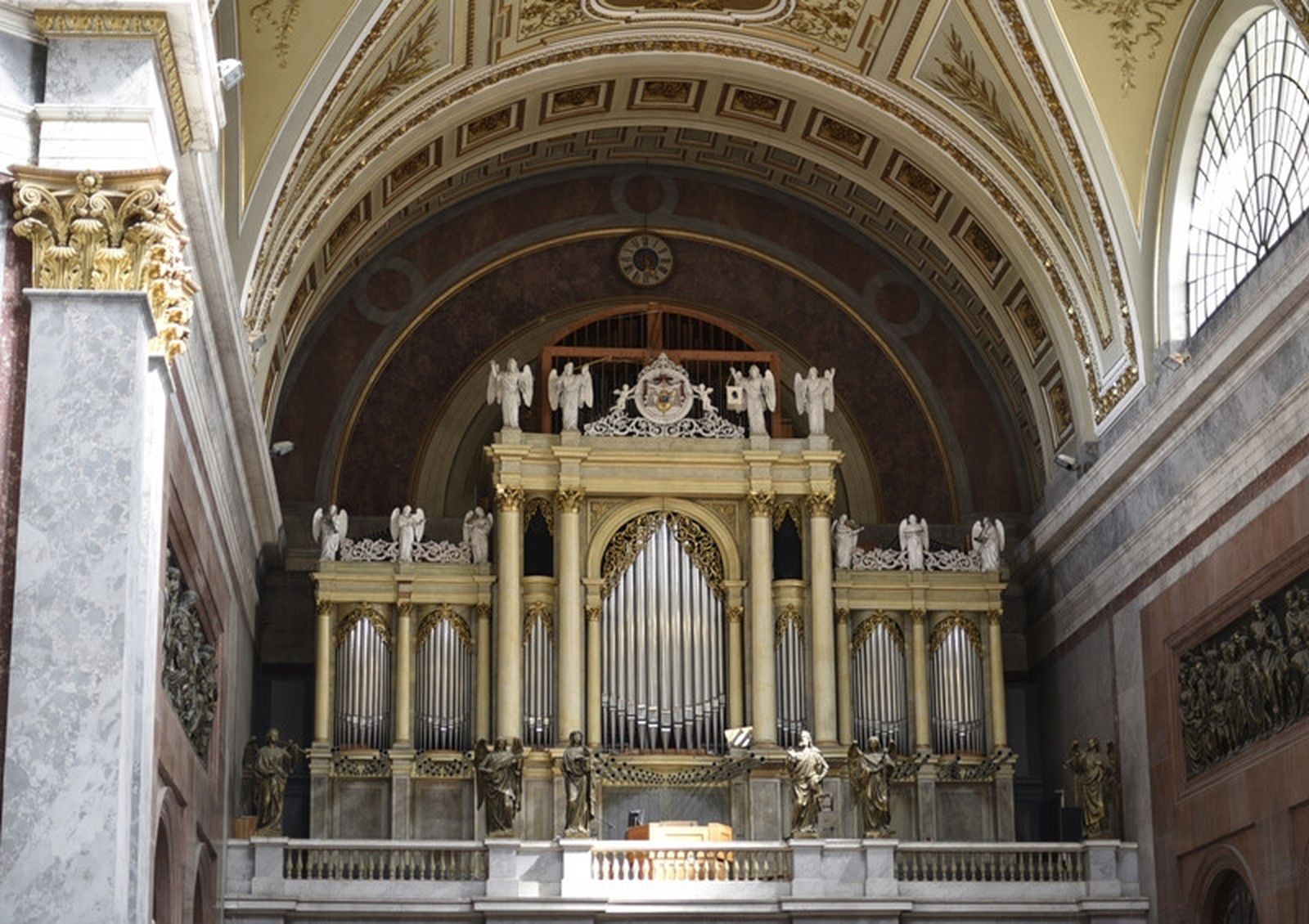
The Organ Loft
The organ loft contains statues by Johann Meixner: Angels Playing Music, St. Cecilia and King David (from the 1850s).
St. Cecilia, patron saint of church music, virgin martyr, died around 230. The Church celebrates its name feast on the 22nd November. "Accompanied by resounding instruments, Cecilia sang to the Lord, saying: Let my heart be spotless, that I may not be shaken." She is usually depicted with an organ and angels playing music. Franz Liszt composed an oratorio in her honor. As a result of a translation error stating that she herself played the organ at her wedding, or another interpretation that "her heart sang only to the Lord in the midst of wedding music", she became the patron saint of ecclesiastical music.
King David was outstanding both as a musician and as a poet. More than half of the Psalms are attributed to him. As a young man, David played the harp so beautifully that he was recommended to King Saul and he accepted him into his service. When Saul was overcome by anxiety and restlessness, David came to him and played melodic, soothing music on his harp, so that the king's heart was stilled. David's divinely inspired compositions are outstanding in many respects.
On the pediment of the organcase there are also angels holding musical instruments. One of them shows a silhouette of Franz Liszt painted on canvas (amateur work from the 1980s to replace the missing instrument ornamentation).
The Organ
The original organ of the Basilica was built by Ludwig Mooser's workshop. Mooser, who built over a hundred organs, arrived in Esztergom on 19 September 1854, accompanied by eight assistants. The shipload with the parts of the organ arrived the next day. The instrument with 49 registers, 3530 pipes and 3 manuals was one of Mooser’s masterpieces. It was completed for the consecration of the Cathedral on 31 August 1856.
The Esztergom Mass of Ferenc Liszt was performed at this festive ceremony, in the presence of Emperor Franz Joseph and the Viennese Court. The composition for symphony orchestra, mixed choir and soloist singers, ordered by Prince- Primate Scitovszky for this occasion, was conducted by Liszt, and the organ part was played by Alexander Winterberg from Weimar.
The third manual of the organ was built in a mechanical cone-valve chest structure. It was enclosed in a swell box and had horizontal swell shades. It contained a rank of pipes from a harmonium, called a claveoline, which was integrated into the console. The timbre of the organ evoked effects of the region of the mid-18th-century Salzburg, the area where Mooser brought his expertise from. Initially, the organ worked relatively well, though there were problems with wind supply and mechanical action. Later, its condition deteriorated as it was badly damaged during World War I. Its pipes were requisitioned. and returned only in 1924. As the Mooser organ suffered further considerable damage in World War II, an organ with a pneumatic cone-valve chest and two manuals was built into the side of the present organ chamber.
It was Canon Treasurer Dr Lőrinc Bartl and organ artist István Baróti (the Organist and Choirmaster of the Cathedral from 1975), who initiated the reconstruction of the organ which is still going on in the present day. Saving the surviving parts of Mooser’s work from the decay of over three decades and the reconstruction of the original timbre was the first task. In Hungary of the 1970’s the restoration of musical instruments was virtually unknown. Thus, this demanding and time-consuming task had to be carried out in the face of the sympathetic scepticism of the contemporary profession by István Baróti himself, with the help of his students.
The peculiarly antique yet bright, coolly sublime timbre of the revived few ranks of pipes was the starting point for István Baróti’s new organ design. Befitting the rank of the Cathedral both in its dimensions and set of registers, it accommodates to the grandeur and the acoustic conditions of the Cathedral in full measure. The second task was to build a new instrument based on Baróti’s design. It was started in 1978-1979 with the participation of organ builders Gyula Vági and János Farkas. The acquisition of basic structural elements and a few ranks of pipes was made possible through the contribution to the necessary funds made by the connections in Rome and Germany of the then Cardinal and Archbishop Dr László Lékai.
It was at the end of 1980 that the first seven restored Mooser registers could be sounded. At the same time, the Rieger organ that had worked for 34 years fell silent for ever. However, following the initial momentum, restoration work started losing pace after 1983. The swell box was finished only by the autumn of 1986 with a few registers still missing. Further progress was even more modest: in 1988 - 1989 three, in 1994 two registers and in 1996 the 12 lower pipes of the Major bass 32’ register were built in. In 1999 39 of the 146 registers designed for five manuals were in operation, while several ranks of pipes bought during the tenure of Archbishop Lékai were waiting to be built in. Rising inflation and other unfavourable conditions following the change of regime caused a further setback to the organ construction.
Following the death of István Baróti in the summer of 2014, Péter Kovács organ artist was appointed the new Choirmaster and Organist. Currently the organ has 77 functioning registers on five manuals. Its structure is an electrically-operated slider chest.


